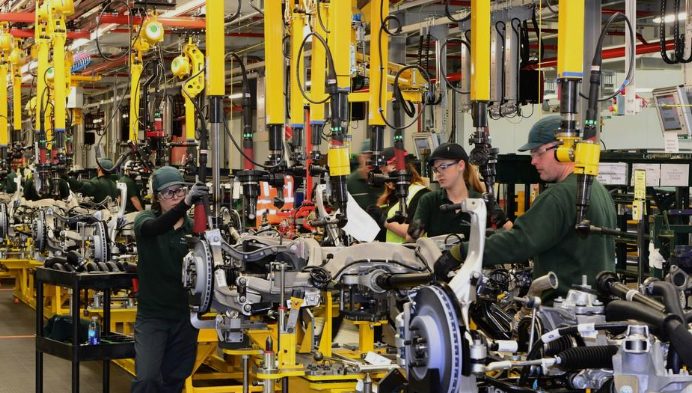8 Merger And Acquisition Tips For Business Owners In 2024

As we navigate the ever-evolving business landscape in 2024, the world of mergers and acquisitions (M&A) continues to be a strategic avenue for companies seeking growth, synergy, or a competitive edge. However, the M&A process can be complex and challenging.
Business owners need to carefully plan and execute these transactions to ensure success. Here are seven essential tips for business owners considering mergers and acquisitions in 2024.
1. Strategic Alignment And Vision:
Before engaging in a merger or acquisition, business owners must thoroughly assess the strategic alignment and vision of the potential partner. It involves scrutinizing the overarching goals, mission, and long-term vision of both entities.
A successful integration is more likely when there is a shared sense of purpose, and the strengths of each entity complement the other. This alignment not only enhances the immediate benefits of the merger but also contributes to sustained growth by creating a synergistic partnership that strategically positions the combined entity in the market.
Business owners should engage in open and transparent communication to ensure a mutual understanding of objectives.
2. Embrace Technological Integration:
In the rapidly evolving landscape of 2024, technology plays a pivotal role in shaping the future of businesses. Business owners must prioritize targets that bring advanced technological capabilities to the partnership. Whether it involves expertise in data analytics, artificial intelligence, or digital infrastructure, a tech-savvy partner can propel the business into the future.
Embracing technological integration ensures that the merged entity remains relevant, competitive, and well-equipped to meet the evolving demands of the market. Additionally, fostering a culture of innovation within the combined organization can encourage ongoing technological advancements.
3. Appraisal Expertise:
Including professionals with expertise in appraisal services is integral to the M&A process. Appraisers bring valuable insights into the valuation of assets, ensuring transparency and fairness in financial negotiations. Their expertise contributes to informed decision-making by providing a clear understanding of the financial aspects of the transaction.
Appraisal services become an integral part of the overall M&A strategy, helping business owners navigate financial complexities and facilitating a smoother transaction process. When selecting an appraiser for your merger and acquisition, ensure you go for one with experience in your industry. For instance, if you operate in the industrial or manufacturing industry, you should hire reputable industrial appraisers. This ensures a tailored understanding of unique valuation factors, enhancing the accuracy of the appraisal process.
4. Robust Due Diligence:
Due diligence is the foundation of a well-informed decision-making process in the M&A landscape. In 2024, the emphasis on due diligence is heightened as businesses face increased complexities. It involves a comprehensive examination of financials, operational risks, and cultural compatibility.
Thorough due diligence minimizes the risk of unforeseen challenges and lays the groundwork for a smoother integration by providing a clear understanding of the strengths, weaknesses, and potential synergies between the merging entities. Business owners should involve specialists in legal, financial, and cultural aspects to ensure a comprehensive evaluation.
5. Focus On Employee Integration:
The success of any merger or acquisition is intricately linked to the smooth integration of employees from both entities. Business owners should prioritize a comprehensive approach to employee integration that goes beyond logistical adjustments. Fostering a positive culture, ensuring effective communication, implementing targeted training programs, and initiating cultural assimilation efforts are pivotal.
By focusing on employee integration, businesses create a unified workforce that collaborates seamlessly, fostering a sense of unity and shared purpose. Transparent communication about changes, opportunities, and expectations is crucial for gaining employee buy-in.
6. Regulatory Adherence And Risk Management:
Navigating the complex regulatory landscape is a critical aspect of M&A transactions. In 2024, business owners must be vigilant about compliance and risk management to mitigate potential legal challenges.
Staying informed about evolving regulations in the industry and the geographies of operation is essential. A robust risk management strategy is vital to safeguard the merged entity from unforeseen legal and compliance challenges, ensuring a smooth transition without legal hurdles. Engaging legal experts to provide ongoing guidance on compliance and regulatory changes adds an extra layer of assurance.
7. Flexible Financing Strategies:
Given the dynamic nature of financial markets in 2024, business owners should explore innovative and flexible financing strategies for M&A transactions. Fluctuations in financial markets necessitate a strategic mix of equity, debt, and alternative financing options.
Crafting a resilient financing structure ensures that the M&A process is not unduly burdened by financial constraints, allowing for greater flexibility in managing the financial aspects of the transaction. Business owners should continuously monitor financial markets and be prepared to adapt financing strategies based on market conditions.
8. Anticipate Cultural Challenges:
Mergers bring together diverse organizational cultures, and addressing cultural disparities is crucial for successful integration. In 2024, business owners should proactively anticipate and address cultural challenges by fostering a culture that values inclusivity, collaboration, and adaptability. Open communication channels, cultural awareness programs, and initiatives that bridge cultural gaps contribute to creating a harmonious post-merger environment where employees from both entities feel valued and engaged. Regular check-ins and feedback mechanisms can help in identifying and addressing cultural challenges proactively.
Conclusion
Mergers and acquisitions are powerful tools for business growth, but they require meticulous planning and execution. In 2024, where technological advancements and changing market dynamics play a significant role, business owners must adapt their strategies accordingly.
By focusing on due diligence, digital transformation readiness, legal compliance, communication, talent retention, and hiring expert business appraisers, business owners can navigate the complexities of M&A transactions and position their companies for long-term success.
Read Also:
















